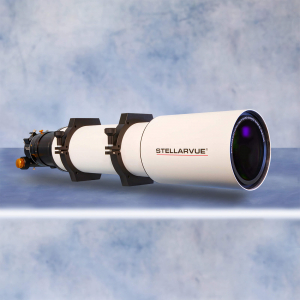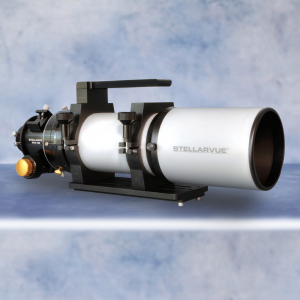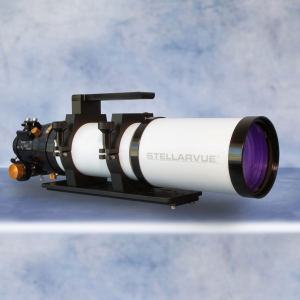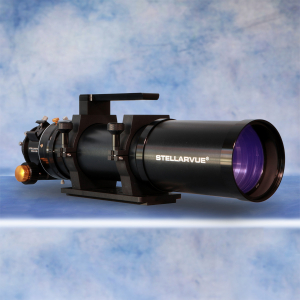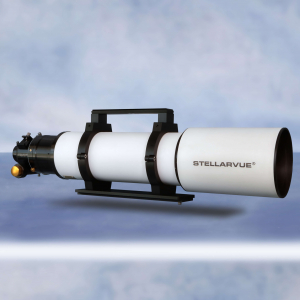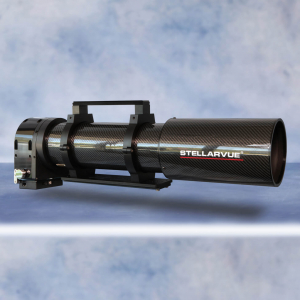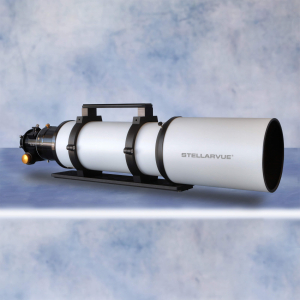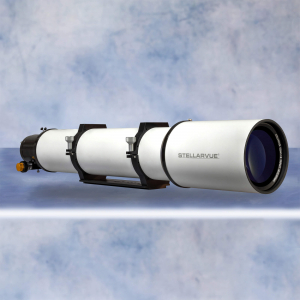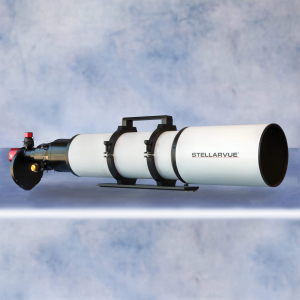SVX180T - Crescent Nebula


With his SVX180T, Nicola Beltraminelli caught this tremendous shot of the Crescent Nebula in Cygnus. This emission nebula rests about 5,000 light-years away from Earth and has a diameter of roughly 25 light-years. It was formed by the fast-moving stellar wind from Wolf Rayet star 136, colliding with slower moving wind ejected by the star when it became a red giant. The result is a shell made up of two shock waves, one moving outward and the other moving inward, The latter of the two heating the stellar wind to X-ray emitting temperatures.
According to Nicola:
“NGC 6888 is a relatively young nebula, estimated to be around 250,000 to 400,000 years old. Over time, the nebula will continue to expand and dissipate as the Wolf-Rayet star evolves, eventually ending its life in a supernova explosion, which will further influence the surrounding interstellar medium.”
“For this project, the initial idea was to capture the crescent nebula, the soap bubble nebula, as well as part of the neighborhood. While starting to process the image, I observed that the resolution within the Crescent nebula was way above my own expectations. So, I focused exclusively on the Crescent. I accumulated more than 60 hours of exposure, to capture the details also on the faintest regions of the nebula. For the processing, I drizzled 2-fold the Crescent to better capture the details.
Other Designations: NGC 6888, Sh 105, Caldwell 27.
Of note balancing the colors was not an easy task, as one can easily end up dominating with one emission rather than the other. The solution I applied was aimed to show the oxygen bubble and its incredible details, as well as the filaments of the hydrogen emissions.”
Details:
Telescopes: Stellarvue SVX180T
Cameras: ZWO ASI6200MM Pro
Mounts: 10Micron GM2000 HPS II
Filters:
- Astrodon H-alpha 5nm 50 mm
- Chroma Blue 50 mm
- Chroma Green 50 mm
- Chroma OIII 3nm Bandpass 50 mm
- Chroma Red 50 mm
Software:
- Adobe Lightroom Classic
- Adobe Photoshop
- Pleiades Astrophoto PixInsight
- Stefan Berg Nighttime Imaging 'N' Astronomy (N.I.N.A. / NINA)
*For more details and an in-depth look at this image, visit Nicola’s AstroBin.
References:
Bakich, M. E. (2023, August 25). 101 Must-See Cosmic Objects: The Crescent Nebula. Astronomy Magazine. https://www.astronomy.com/observing/101-must-see-cosmic-objects-the-crescent-nebula/
Wikipedia contributors. (2024, July 10). Crescent Nebula. Wikipedia. https://en.wikipedia.org/wiki/Crescent_Nebula
Salvatore Iovene - http://iovene.com/. (n.d.). Highly resolved Crescent Nebula in HOO with RGB stars. AstroBin. https://www.astrobin.com/x0og5j/B/
APOD: 2016 June 10 - NGC 6888: The Crescent Nebula. (n.d.). https://apod.nasa.gov/apod/ap160610.html

